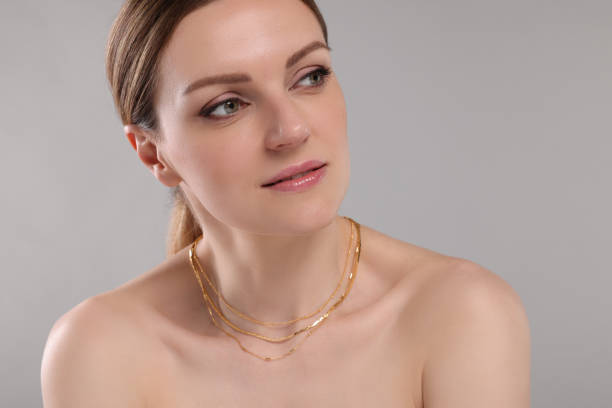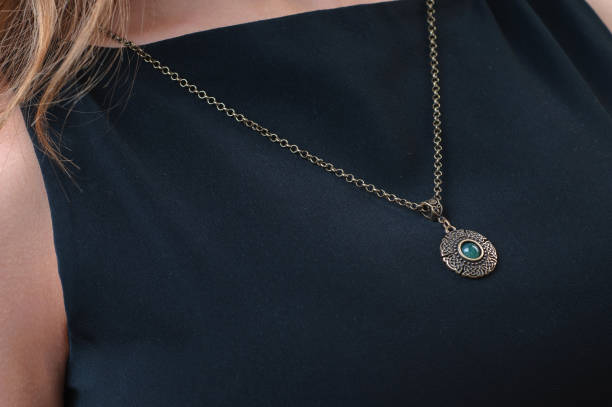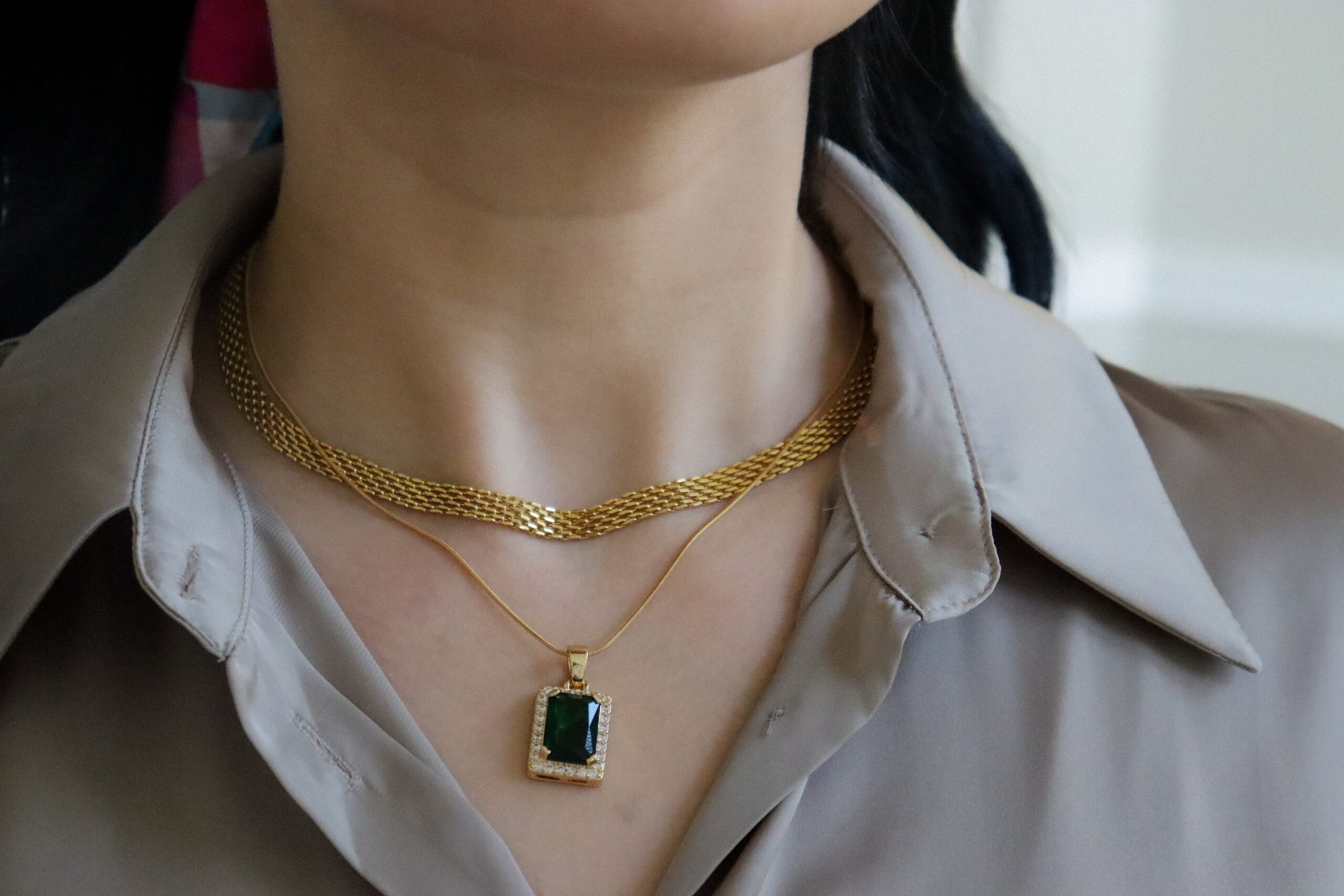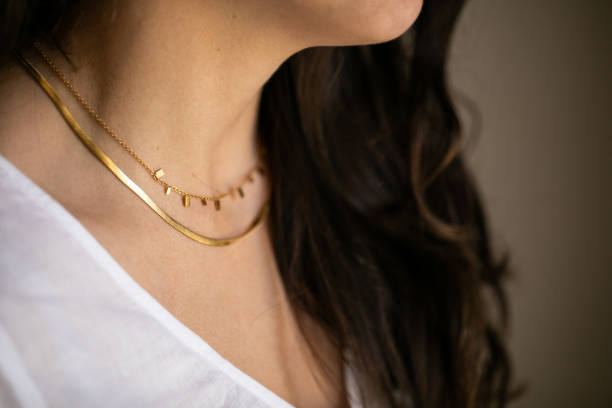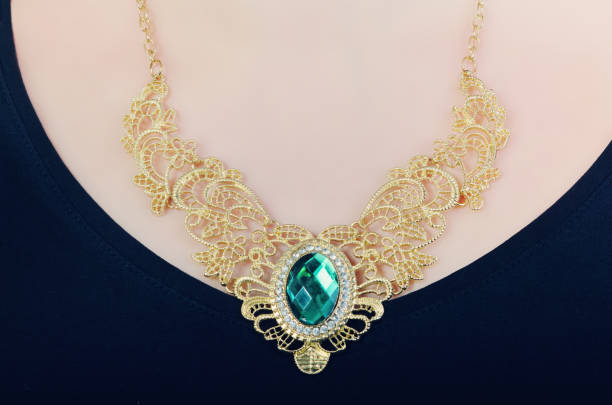Golden Truth: Identifying Genuine 18k Gold Jewelry
Or maybe you’ve always passed by this über-baroque 18k gold necklace dangling from some display somewhere and gone, “Is this really what it says it is?” Finding real 18k gold jewelry is like finding the needle in a pile of straw, but fear not, I got your back! As the rest of the article will go on to do, replete with golden nuggets that will help in separating the good, the bad, and the glittery impostors.

Another dead giveaway about real gold has to do with the weight. Because gold is extremely dense, it is very heavy. When it happens to be alarmingly light, well, that is a flag. You’d go to pick up a doughnut but somehow it feels like a cotton ball; that doesn’t add up!
Ever heard of the magnet test? Bring out a strong magnet and observe whether the jewelry clings to it or not. Gold isn’t magnetic. Well, if that 18k gold pendant that you had eyed clings to the magnet like white on rice, then it’s probably a fake. But realistically, so aren’t many other metals, which makes this a test not really full-proof.
Okay now, let’s go a little chemical, shall we? Real 18k gold resists most corrosion. A simple acid test can give quite a lot of information. Nitric acid is normally used by jewelers to check if the gold is real or not. On the real one, it produces no reaction, while on the fake one, it fizzes like vinegar on baking soda! But I would not recommend trying that at home. Leave that acid to the experts.
Well, here’s the simple trick: the bite test. You might have seen the Olympians doing this when they were awarded their medals. A bit unsophisticated, but biting down on gold can actually show its purity: 18k gold is pretty soft. Just remember, your teeth aren’t tools, and gold isn’t a snack.
Avoid discolored pieces like the plague. Gold that is 18k or purer should not tarnish at all. The slightest discoloration or fading is a dead telltale of inferior metals seeping into the mix. Sure, maybe grandma’s old ring may be grungy, but clean it, and it should shine like Midas himself touched it!
When it sounds too good to be true, it probably is. Be realistic: real 18k gold is never cheap. And if someone sells you “real” 18k gold for the price of a latte, well, get your detective hat on. Such offers glint, but they often prove to be fool’s gold.
Take it to the experts: That 18k gold piece needs to be appraised. A keen-eyed jeweler sometimes can find inconsistencies quicker than one can say “gold digger.” Besides, they have all those fancy gadgets-spectrometers or whatever-to corroborate just how pure the gold is.
But what if you’re buying online? Pictures can be deceiving. Check out reviews, ratings, and seller history. If the store has a slew of happy customers raving about their purchases, you’re likely in good hands. But if the reviews read like a horror story, run to the hills!
10 Sneaky Scams to Watch Out for When Buying an 18k Gold Necklace
Buying an 18k gold chain for women is actually treading through a minefield. Not everything that glitters is gold, neither is it safe from the associated risks. These fraudsters seem to be getting wiser and more cunning, duping any and everybody. Let’s see a few of these and how one can avoid them like a ninja.
First, look out for fake gold. It really is more common than one would think. Low-quality metals mixed together by the worst of vendors might try to deceive one. Have you ever felt that you were purchasing an 18k necklace and then found yourself with some plated junk? Not cool, right? Always make sure there’s a hallmark, or get it tested. A decent seller won’t mind at all if one needs authentication.
The second phony trick is that of the phony certificates. You know those shiny, life-like papers? As fake as Monopoly money, sometimes. Bogus certificates distributed by fraudsters to validate their garbage. And how does one fore-arm oneself to avoid this trap? Buy from known, reputed jewelers. A well-established brand is seldom going to risk trying to rip you off. A good name has its reputation on the line.
Then comes the switcheroo trick-the most deceiving of them all: you choose, for example, that really beautiful piece, pay for it, then go out with a completely different necklace much cheaper. That would be one horror story, right? Always check your purchase before you leave the store-no rose-tinted glasses. Shopping online, read the reviews beforehand, and when it finally does come, carefully check.
There’s always that one deal that’s just too good to be true. Eighty percent off an 18K gold necklace? No way, mate. Scammers lure by offering unbeatable prices and draw one right into their net. Quality comes with a price attached. If it sounds too good to be true, most of those times, it never is. Trust your instincts and avoid suspiciously cheap deals.
Then there’s the plastic fantastic. Certain scams have managed to sell plastic covered in a thin layer of gold as a solid chunk of gold. Crazy, right? This one is a bit trickier: be hyper-vigilant. Hold the necklace; feel its weight; real gold is heavy, much heavier than you might think. Subtly scratching a corner could expose the truth underneath.
Another trap-what’s called the ‘Heirloom Scam’: some smooth-talking salesman trying to convince you it once belonged to some royalty, sprinkling syrupy stories of its vintage and value? Big red flag. With a real, antique piece of art, a history can be traced. Trust facts, not fables.
Not in-store scams alone, here come the cyber con artists. Online marketplaces could be shady places-reviews could be fabricated, pictures could be photo-shopped. Worth it, then, to shop from reputable websites. A digital footprint says it all. Look for customer reviews and return policies, and there’s no reason to rush. Then, of course, there is the alloy scam: they sell you a necklace of gold alloyed with too much other stuff, hence worth a fraction. How to recognize it? Any decent merchant would disclose the exact content of gold in it. And if in doubt, ask on. Here, knowledge is your armor. Now comes overpricing. Some of these sellers deliberately increase the prices in hopes of you being ignorant. You pay like way above the market rate. Ouch. Research current gold rates before shopping, have an estimate in the amount.
